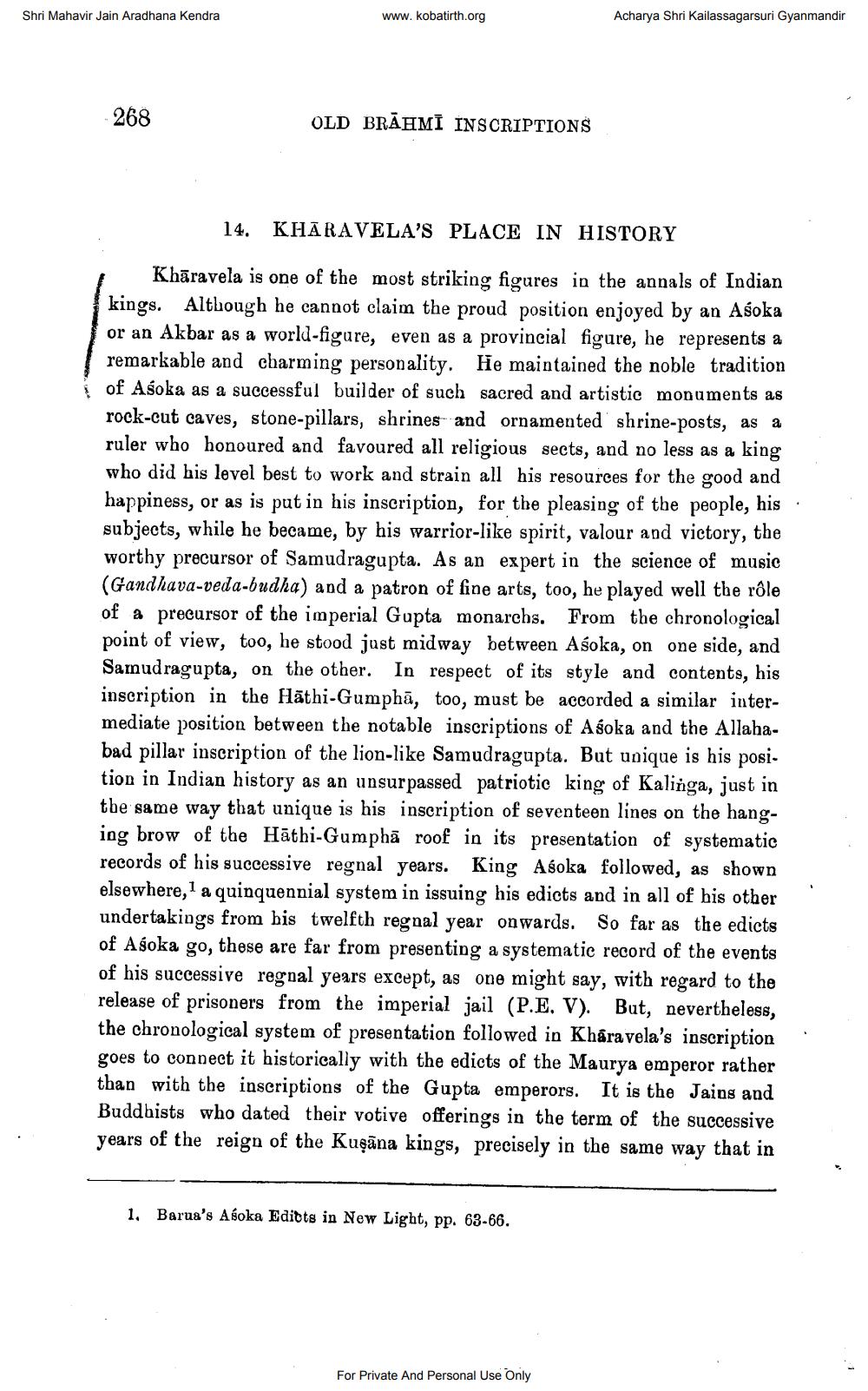________________
Shri Mahavir Jain Aradhana Kendra
268
www.kobatirth.org
14.
OLD BRAHMI INSCRIPTIONS
KHARAVELA'S PLACE IN HISTORY
Kharavela is one of the most striking figures in the annals of Indian kings. Although he cannot claim the proud position enjoyed by an Aśoka or an Akbar as a world-figure, even as a provincial figure, he represents a remarkable and charming personality. He maintained the noble tradition of Asoka as a successful builder of such sacred and artistic monuments as rock-cut caves, stone-pillars, shrines and ornamented shrine-posts, as a ruler who honoured and favoured all religious sects, and no less as a king who did his level best to work and strain all his resources for the good and happiness, or as is put in his inscription, for the pleasing of the people, his subjects, while he became, by his warrior-like spirit, valour and victory, the worthy precursor of Samudragupta. As an expert in the science of music (Gandhava-veda-budha) and a patron of fine arts, too, he played well the rôle of a precursor of the imperial Gupta monarchs. From the chronological point of view, too, he stood just midway between Aśoka, on one side, and Samudragupta, on the other. In respect of its style and contents, his inscription in the Hathi-Gumpha, too, must be accorded a similar intermediate position between the notable inscriptions of Asoka and the Allahabad pillar inscription of the lion-like Samudragupta. But unique is his posi tion in Indian history as an unsurpassed patriotic king of Kalinga, just in the same way that unique is his inscription of seventeen lines on the hanging brow of the Hathi-Gumpha roof in its presentation of systematic records of his successive regnal years. King Aśoka followed, as shown elsewhere,1 a quinquennial system in issuing his edicts and in all of his other undertakings from his twelfth regnal year onwards. So far as the edicts of Asoka go, these are far from presenting a systematic record of the events of his successive regnal years except, as one might say, with regard to the release of prisoners from the imperial jail (P.E. V). But, nevertheless, the chronological system of presentation followed in Kharavela's inscription goes to connect it historically with the edicts of the Maurya emperor rather than with the inscriptions of the Gupta emperors. It is the Jains and Buddhists who dated their votive offerings in the term of the successive years of the reign of the Kuşana kings, precisely in the same way that in
1. Barua's Asoka Edibts in New Light, pp. 63-66.
Acharya Shri Kailassagarsuri Gyanmandir
For Private And Personal Use Only




